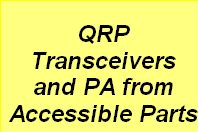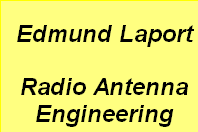


Antentop is FREE e-magazine devoted to Antennas and Amateur Radio an
Special page devoted to
RW3XA’s 9 Band HF Vertical Antenna

Custom Search
|
ANTENTOP-
01- 2005, # 007
|
RW3XA 9 Band HF Vertical Antenna
|
|||
|
|
||||
|
|
||||
|
|
||||
|
By Serge V. Satyr, RW3XA (ex: UA3XBY), rw3xa@qsl.net Translated
by RW3XW Credit Line: http://www.feerc.obninsk.org/rw3xa/ant/gpxa_en.htm |
Made in |
|||
|
|
||||
|
As a rule, we need taking some steps to make any antenna to be resonant on several amateur bands. The body of the aerial needs some special constructive elements to tune it into a resonance within different amateur bands. These elements can be concentrated (LC, L, C, for example, Cushcraft R7000 (http://www.cushcraft.com/amateur/r7000.htm) or distributed (loops, lines, for example, GAP-Titan (http://www.gapantenna.com/titan.html ). I.e. the antenna is broken up into several parts in between which there are those adjusting elements providing a resonance of the aerial. The more such elements, the more difficulties with their optimum adjustment, and reliability of a design as a whole leaves much to be desired because it is cut by insulators. Certainly, because the aerial is a multiresonant one, it is enough to change the band in the transceiver - simple and convenient, but not so good if your neighbour HAM is on the air too - rustles and clicks from the signals is usual business even if he drives the different band. The multiband vertical can be made upon the other constructive principals: the radiating part of the antenna through a switchable matching network to the feed line. In the other word, input impedance of a random wire is of a complex value, so the matching network transforms input impedance of it into feed line impedance. Naturally,
for the reason of an accurate matching on each amateur band it
is necessary to separate matching networks. In fact the common
multiband matching is not the best choice - it is very difficult
to achieve accurate matching (in fact for different bands matching
circuits may be different) and to provide necessarily good quality,
accordingly, will be more losses than for the separate network.
As for the similar designs it is of a rare issue (for example
QST
(http://www.arrl.org/htdig/?q=Modest+45+Foot+DX+Vertical&cmd=Search!),
Titanex (http://titanex.de/frames/gp.html)
though they have some advantages before the other verticals. For
example: |
1. Mechanical durability of the vibrator because of absence of insulators.
Naturally, "random length" means reasonable length at which theoretical efficiency on the lowest frequency (1.8MHz) would be of at least ten percents, so the total length should be at least 10 meters long. Further, by means of separate LC matching network for every HF band, the aerial will be matching 50-Ohm active load, then the 50-Ohm coax feed line can be of any length. So the block diagram is just like this: the mast itself - the switched matching networks - the coax feed line. This vertical antenna is without traps, loops and similar mechanically unreliable elements. In simple words it's just telescoped aluminum tubing. And for some electric lengthening there're four wires top-hat folded capacitive loading at the top of the mast is used. |
|||
|
Page 32 |
||||
 |
 |
 |
 |
Just for Fun:

Powered byIP2Location.com
Thanks for your time!
Last Updated:
February 22, 2020 20:19





